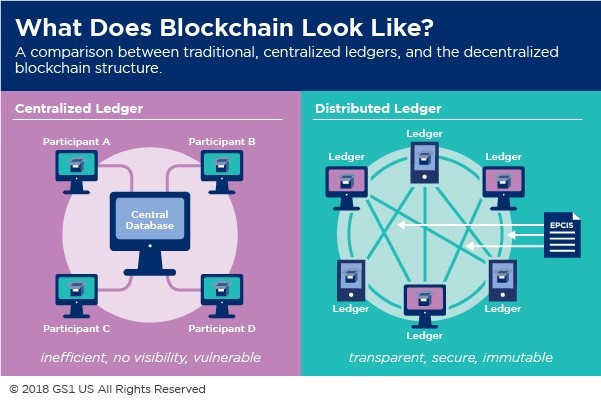Despite much progress in technology, information technology departments (IT) continue to lack credibility with business leaders and despite spending significant costs, many “IT” projects continue to “fail” in the eyes of the very users that IT tries to support. In this article, I will share the common challenges that contribute towards perceived and actual misalignment between IT and business.
We know that technology is at the core of every business process and is the primary driver of competitive advantage. However, studies suggest that most business leaders do not feel comfortable with the direction for their IT and digital transformation. As business leaders focus more on IT costs and not how IT can transform the business, IT is pushed more towards daily operations versus long-term strategy. Dave Aron of Gartner Research, says that “Buying a piece of technology does nothing by itself. It’s how you use the technology that matters the most. But we must make sure that what we buy satisfies the business needs.”
During my many interactions with business and IT leaders, I normally ask questions like:
- Explain the core business of the organization?
- Have IT resources spent anytime working in the day of life of an average business user doing daily tasks as if they were in that role?
- Do business and IT teams communicate in the same language (i.e., Does IT communicate in a manner that a business user will understand technology), or does IT use technical jargon that goes over the heads of most people?
- Are you comfortable that your IT and business strategies are aligned?
- Do IT leaders actively participate in senior leadership meetings and define business strategy?
Not surprisingly, the answers to these questions are on opposite ends of the spectrum between the business and IT leaders. In spending more than two decades of providing technical solutions to business problems, I have found that such divide is only expanding as technology becomes increasingly complex each day. A global economy puts increasing pressure on business to stay competitive and drive growth at a rapid pace, especially as it relates to food safety, regulatory and quality. Food is now globally sourced and the processes require innovative technical solutions in assisting food safety and regulatory compliance of foreign suppliers. Many IT organizations do not have a deep understanding of the business of food safety, leaving a gaping hole in deploying solutions that keep our food chain supply safe.
Defining a Bridge
So how do we effectively tackle this divide between IT and business leaders? I often call myself the “bridge” between business and IT. For those that understand technology, it is your role to ensure that what we do with technology satisfies the business need! Ultimately, it is the business that will succeed with our support, because technology by itself is not successful. But wait, not every IT staff member can be expected to understand the business and technology. What I often observe is that most IT organizations lack a leader who has the business, technical, interpersonal, innovative and customer-centric skills. Such people are certainly not growing on trees. Business and IT leaders must establish a group of resources that act as the “bridge” for their organization. By identifying these resources, you can focus on providing them with the appropriate skills and training to work jointly with business and IT to deliver solutions that drive the overall business strategy. Finally, I must point out that this group is normally led by the chief information officer (CIO), who is more importantly a business leader with technical acumen and not a hardcore technologist.
CIO as a Business Leader First
The role of a CIO is perhaps the most complex of all C-Level executives. CIO is expected to manage daily IT operations, contain costs, increase efficiencies, provide valuable insights through factual data, partake actively in business strategy, align the IT strategy with the business, and innovate at the speed of business. Not to mention, do all this while increasing overall customer experience. CIOs must tighten the connection of their IT teams to the business!
IT Drives Project Prioritization Aligned to Business Strategy
How can CIOs, IT, and business leaders close this fundamental gap between their IT and business organizations? Let’s first start with prioritization. How often do you find yourself saying that I must have something completed by IT yesterday? If you are like most people, you would probably challenge yourself in whether you demand IT to be reactionary to your needs. Most IT organizations fail to understand the true impact of user requests to the business. Usually, project prioritization comes down to cost, who will pay for it, and what may be defined as the “cool” factor.
IT has the broadest view of all technology projects across the organization and must lead in communicating with all business leaders. A CIO needs to effectively communicate the impact of various projects on each of the business divisions, the impact of the project, the cost/ROI, and help define the prioritization for business projects. IT must play the role of a negotiator and help business leaders in making decisions that provide the greatest impact. Martha Heller in the CIO Paradox says that there are “no IT projects, only business projects!”
As mentioned earlier, IT departments usually lack understanding of the food safety and quality processes. CIOs need to conscientiously understand the business of food safety, as it is not only important to keep our food chain safe but also to protect the organizational brand and ensure that food safety and regulatory groups are able to monitor, assess, and proactively ensure that no harm is introduced to the public through their products. Many organizations rely on recall processes to help contain food safety issues, but that is a reactive approach, which in many cases, tarnishes the brand image and costs the organization more than what was ever expected.
Keeping It Simple
How often do we see technology being deployed because the previous tools were too old or have simply lost their luster? With a constant bombardment of new gadgets and apps, we increasingly find ourselves overwhelmed with the variety of options available for almost any task. But that does not mean that the most advertised, or the one with highest reviews is going to fit your specific business needs. Cookie-cutter approaches do not work in all business environments. IT must assess the business need, challenge the business users on their processes, propose and analyze options, and then actively work with business and software vendors to find the right fit. Sometimes, that means not changing anything at all.
I often see businesses put together selection committees comprised of business and IT teammates. The business leaders each focus on their own silos, and IT focuses on such things as security, infrastructure, demand on their time and support. But no one in the group is looking at the impact across the organization. An IT strategy aligned with business will ensure that IT leadership is able to guide each business user towards the pros/cons of any project impacting their specific business area. IT must be in front of the business and lead business users through all technology choices. CIOs and their IT teams need to learn to convey the messages through examples and language that a business user understands. Help businesses find software vendors that are at the forefront of innovation and have not fallen in the trap of legacy enterprise software companies that are resistant to change.
Another common mistake by IT is asking the business users what they want. IT needs to take the ownership of understanding the business and then innovate in a manner that makes that task/process easy, efficient, accurate, sexy and simple! Be truly disruptive by providing a product that your business users automatically gravitate to that solution. It is the role of the IT departments to understand the business. I am convinced that certain business jargon, like FSMA, FSVP, social responsibility, and sustainability are terms not well understood by most IT organizations. Many food compliance staff members are buried in mountains of paper, PDF and email documentation, leading to selective review and processing of information. Such an approach of sampling only a part of relevant information is a major risk to our food supply chain. In recent years, tools have emerged that allow food safety and regulatory staff to electronically monitor the relevant information and focus their attention on information that really matters. By streamlining the processes through creativity and technology, we can empower the food safety staff to be vigilant and ensuring that only safe, reliable, and high-quality food enters our food chain.
Getting Business to be Comfortable with IT
In an organization, it is easy to find executives and managers who have worked across several departments. A customer service representative may transition to sales, or a vice president of sales becomes a CEO of the company. But not many people crosspollinate with IT. Most people outside of IT do not understand technology at a level to contribute effectively on a technical team. So, you may be saying why can’t the business understand technology? Well that’s because technology is in a supporting role for the business. It’s like a supporting actor helps the lead actor succeed at their role in a movie. It is the job of the IT group to support the business and get them to be comfortable with you. In every project, ensure that there is a business leader who owns the project. Remember that it is a business project, and not an IT project.
The CIO Magazine and other such periodicals are frequently publishing articles on speaking the language of the business. This suggests that IT still does not understand how to communicate with the business. Simplify your communication by removing technical jargon from your communications. Actively participate in business meetings to understand the needs of the business user. Be curious and be a trusted advisor for the business. Remember that you are the bridge and you do not need to explain the underlying infrastructure to you your business peers; you just need to help them do their job effectively, and efficiently. Discuss with them how you can help them win!
IT is about serving the business, being adaptable, innovative, and having its success be defined as only being the success of its business partners. Martha Heller in CIO Paradox states that “[IT] needs to have egos that are big enough to initiate transformative projects but small enough to let someone else take credit.”























